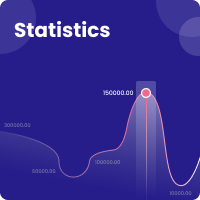The body like experimental variable
Abstract
In the field of robotics, the evolution of the concepts of embodiment and animation processes lead to define the concept of a kernel consisting of a set of stable algorithms, independent of the specific embodiment on which these algorithms could be applied. Thus, it becomes possible to study experimentally how particular embodiments, considered as experimental variables, shape the robot’s behavior and its longer-term developmental patterns. This methodological stance results into a new approach to children development stressing the importance of a continuously changing body.References
Baudrillard, J. (1978). Le système des objets, París, Gallimard. [(2004). El sistema de los objetos. México: siglo XXI].
Brooks, R. (1999). Cambrian Intelligence: The early history of the new AI, Cambridge (Mass.). The MIT Press.
Chapuis A., y Droz, E. (1949). Les automates, figures artificielles d’hommes et d’animaux. Neuchâtel: Éd. du Griffon.
Clark, A. (2004). Natural-Born Cyborgs: Minds, technologies, and the future of human intelligence. Oxford: Oxford University Press.
Cordeschi, R. (2002). The discovery of the artifical. Behavior, mind and machines, before and beyond cybernetics. Dordrecht: Kluwer Academic Publishers.
Edelman, J. (2007). Learning in and from brain-based devices. Science, 318, 1103-1105.
Fodor, J. (1987). Psychosemantics: The problem of meaning in the philosophy of the mind. Cambridge (Mass.), The MIT Press.
Grey Walter W. (1953). The living brain. London: Penguin.
Haugeland, J. (1985). Artificial intelligence: The very idea. Cambridge (Mass.), The MIT Press.
Kaplan, F. (2001). La naissance d’une langue chez les robots. París: Hermès.
_______. (2005). Les machines apprivoisées: comprendre les robots de loisir. París: Vuibert.
Kaplan, F. y Oudeyer, P.-Y. (2006). Trends in epigenetic robotics: Atlas 2006, en F. Kaplan, P.-Y., Oudeyer, A. Revel, P. Gaussier, J. Nadel, L. Berthouze, H. Kozima, C. Prince, C. Balkenius, Proceedings of the Sixth International Workshop on Epigenetic Robotics: Modeling Cognitive Development in Robotic Systems, LUCS 128.
Kaplan, F. y Oudeyer, P.-Y. (2007 a). Un robot motivé pour apprendre: le rôle des motivations intrinsèques dans le développement sensorimoteur. Enfance, 59(1), 46-58.
____________________. (2007 b). In search of the neural circuit of intrinsic motivation. Frontiers in Neuroscience, 1(1), 225-236.
Kaplan, F., Oudeyer, P.-Y. y Bergen, B. (2008). Computational Models in the debate over language learnability. Infant and Child Development, 17(1), 55-80.
Lakoff, G., y Núnez, R. (2001). Where Mathematics comes from: How the embodied mind brings Mathematics into being. New York: Basic Books.
Lungarella, M., Metta, G., Pfeifer R. y Sandini G. (2004). Developmental robotics: A survey. Connection Science, 15(4), 151-190.
Merleau-Ponty M. (1942). La structure du comportement. París: PUF. [(1976). La estructura del comportamiento.Buenos Aires: Hachette].
Oudeyer, P.-Y. y Kaplan F. (2006). Discovering communication. Connection Science, 18(2), 189-206.
Oudeyer, P.-Y., Kaplan F. y Hafner, V. (2007). Intrinsic motivation systems for autonomous mental development. IEEE Transactions on Evolutionary Computation, 11(1), 265-286.
Pfeifer, R. y Scheier, C. (1999). Understanding intelligence.Cambridge (Mass.), The MIT Press.
Pfeifer R. y Bongard, J. (2007). How the body shapes the way we think: A new view of intelligence. Cambridge (Mass.), The MIT Press.
Revel, A. y Nadel, J. (dir.) (2007). L’enfant, le robot et l’ordinateur. Dossier d’Enfance, 59(1).
Steels, L. y Brooks, R. (1995). Building situated embodied agents. New Haven: Lawrence Erlbaum.
Steels, L., Kaplan, F., McIntyre, A. y Van Looveren, J. (2002). Crucial factors in the origins of word-meaning. En A. Wray (ed.). The Transition to Language, Oxford. Oxford University Press.
Turing, A. (1950). Computing machinery and intelligence. Mind, 59, 433-460.
Uexküll, J. von (1965). Mondes animaux et monde humain. París: Denoël.
Varela, F., Thompson, E. y Rosch, E. (1993). L’inscription corporelle de l’esprit: sciences cognitives et expérience humaine. Paris: Le Seuil.










